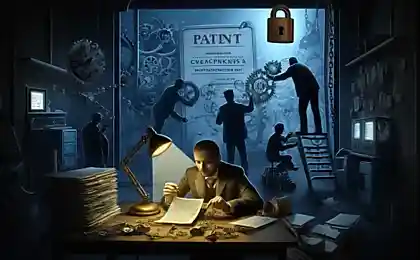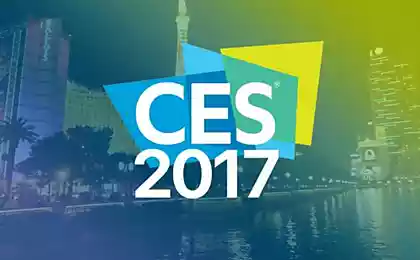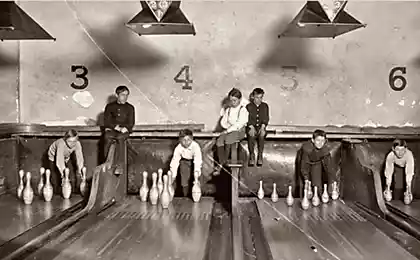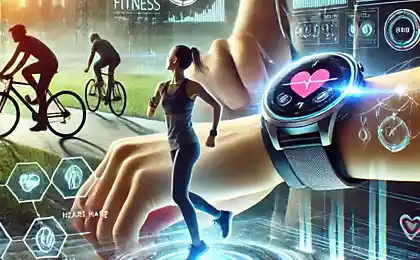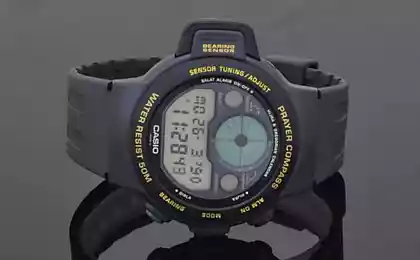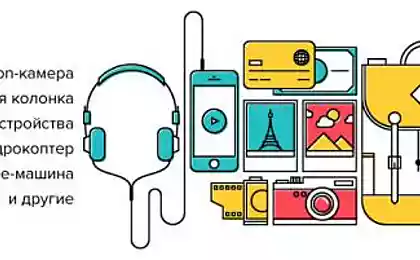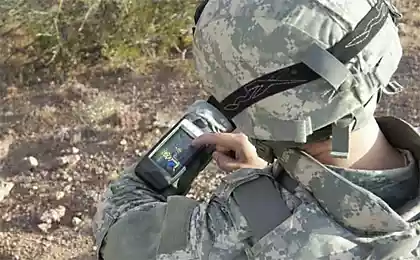1761
Anthology unfulfilled
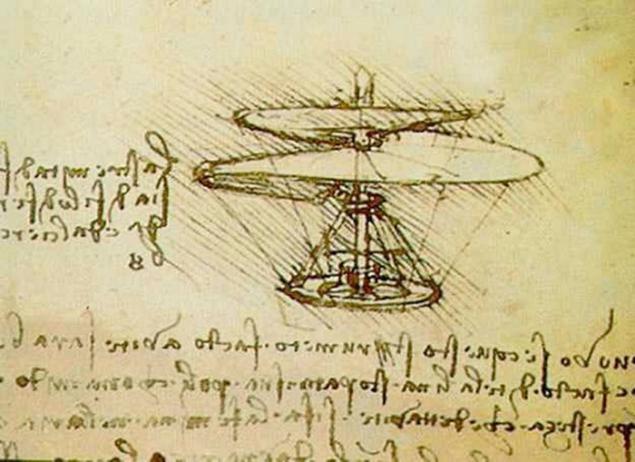
How many times, looking video with a demonstration of any technology or device, which the authors have made a prototype or laboratory model, you thought: "That would be really released such a thing!" And so it seems that a little bit more, some a few months or a couple of years, and there will be some sort of gadget or device whose capabilities are breathtaking and promise new incredible experience. But it never happens.
Our world is full of unfulfilled plans. Lack of funding, nepreodolёnnye difficulty in developing, or is simply remained on paper, or someone in your dreams - the reasons for this are many. And here we want to talk about just some of the many very interesting and exciting technologies that have not been implemented in the form of the finished product. Or not yet implemented.
Sixth Sense
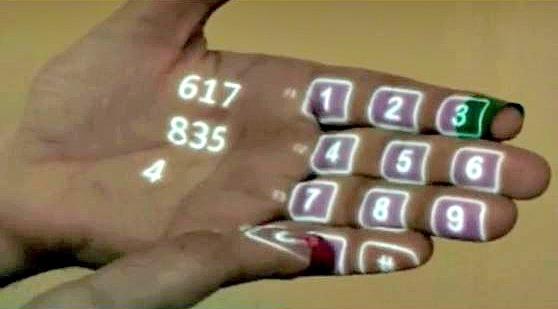
We hope this technology can not yet be attributed to "never implemented". The idea is as follows. Imagine that you have a wearable gadget that analyzes considered you object, analyzes it and gives some advice or information through projection. This can be anything, ranging from information about products in the store and they meet your personal preferences, ending the rapid collection of a kind of "dossier" on his companion on the basis of information from social networks. Neither give nor take, the personal secretary-nerdy.
Details can be found in performance leader of the development team , which took place in 2009. Then a prototype of the device is a rather cumbersome combination of several devices: cameras, projectors, wearable computer. Unfortunately, since the news about project reported.
"Smart" car headlights
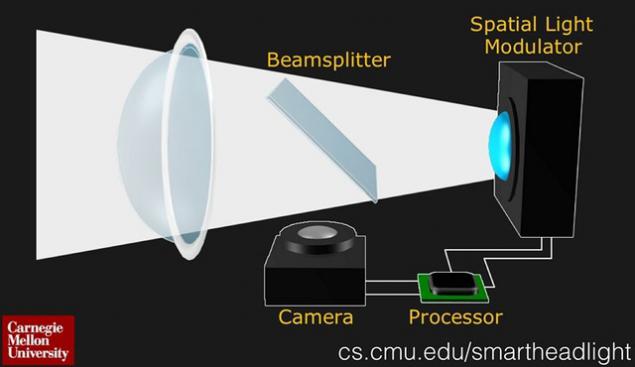
At Carnegie Mellon University for four years working on technology that allows motor vehicle headlamps selectively (!) Does not shine on rain or Snowflakes (!), to improve visibility for the driver; not dazzle oncoming vehicles, keeping the intensity of the illumination of the road; as well as from afar highlighting obstacles on the road to warn the driver about them.
The principle is the following: the space in front of the vehicle is removed continuously at the camera, the computer analyzes the image, which spatial light modulator. Depending on the situation (an oncoming car, precipitation, obstacle) beam pattern changes dynamically. Now the system at a speed of 13 ms reaction is able to identify and track the trajectory of raindrops or snowflakes, "seeing" a kind of dimming zones. As a result, before the driver is not necessary the continuous veil reflecting light rain, visibility is increased, and with it the safety of driving.
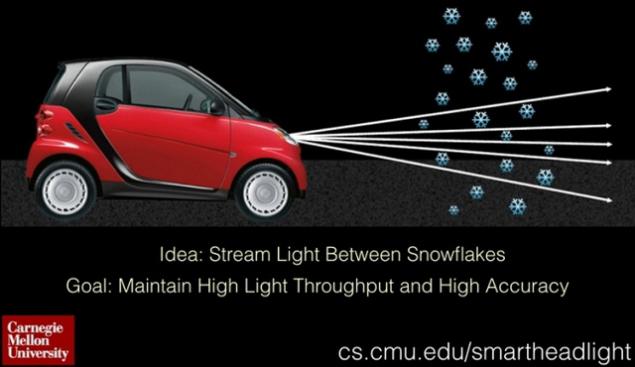
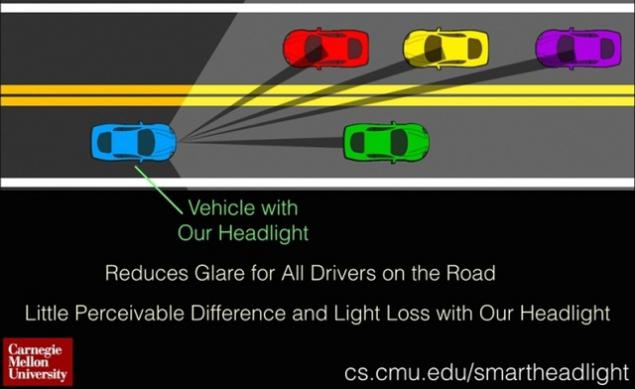
Excellent idea, which has stalled due to lack of performance of the system. It all began with the camera and the projector operating at a frequency of 60 Hz, and the reaction rate was 70 ms. Now the frequency was adjusted to 1000 Hz, and the number of tasks in the reaction rate decreased to 1 ms. But the authors do not expect to see his invention in the form of a commercial product, even in this decade. And for six years or more is too much can change.
Dental phone
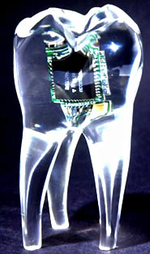
In 2002, two students from the UK created a prototype radio, small enough to be embedded in a human tooth. The device can receive the radio signal and transmit sound via vibrations through the skull bones in the middle ear "owner". Naturally, this could only hear the sound of the owner. Over the past 12 years, if properly financed, maybe we could get a primitive radio in the tooth. Or even a cell phone. Alas, but the invention is and remains a bizarre exhibit.
Read my lips

In the same back in 2002 the Japanese NTT DoCoMo announced that is working on the creation of the phone that can read lips. The first prototype to detect weak electrical signals that are sent to the muscles of the lips, and interpreted them as a team to speech synthesis module. So it was enough even at high ambient noise just whisper the words to the system recognize them. It was also reported that work is underway on the software that was able to visually recognize an acceptable error lip movements and interpret them. In those days, 3G-network still only had to enter into use, it was a promising promising technology. She had to give impetus to the spread of mobile web services, in particular e-mail. Also expected widespread compact cameras built into phones, through which developers planned to read lips. The Japanese believe that the speech recognition by the movements of the lips allow deliver us from the tedious typing letters. By itself, would not have to yell into the phone on the subway and other noisy places. Also, it would be a great option to communicate privately without tedious typing. Technology is going to bring to mind the year 2007.
By the way, in 2010, a team from the Karlsruhe Institute of Technology , Germany, also said the work on speech recognition technology on the muscle electrical impulses. Apparently, they also did not go.
Informative form
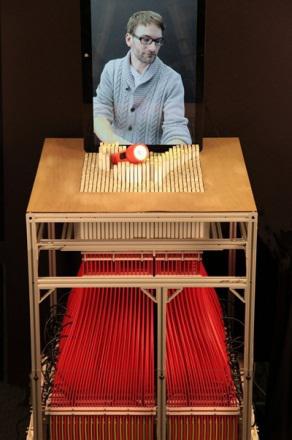
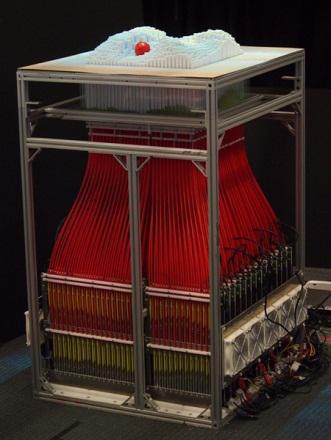
Another brainchild of MIT Media Lab, yet (or "or") not found expression in a commercial product, the system became inFORM < / a>. Her heart is a special table, which is built into the matrix of the vertical scroll bars. By varying the height and speed of their movement, on a matrix formed by all kinds of three-dimensional reliefs. And not just for a certain set program: the system real-time tracking objects and their movement as much as repeating with the matrix.
The system is interactive, ie the user can literally manually adjust the shape of the bas-relief and a way to manage the system. On top of the matrix dynamically projected color image, which further extends the capabilities of the system and the visibility of it.
// player.vimeo.com/video/79179138 video>
Information about the project came about a year ago, so it is hoped that the project will not remain just a fun demonstration.
Virtual Cocoon
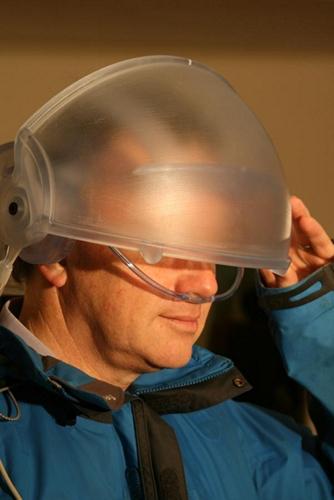
In the spring of 2009 was a prototype virtual reality device that can stimulate all five major human senses: sight, hearing, touch, smell and taste. Developed the device, called Virtual Cocoon, a group of scientists from the Universities of York and Warwick. The smell they were going to generate with the help of technology, which uses some pre-prepared scented mixture. To transfer the taste and texture of food intended to be placed in the mouth a special module. Tactile elements had to provide contact with the user.
It all sounds very strange, but from an abundance of scenarios device is breathtaking. Alas, for the past 5 years, 5 no longer received any information about the progress in the development.
In the world created a huge number of inventions and innovations that remain unclaimed. Among them there are also extremely undervalued. What would you high-tech invention also attributed to the category of "great / great, but never sought"?
Source:

